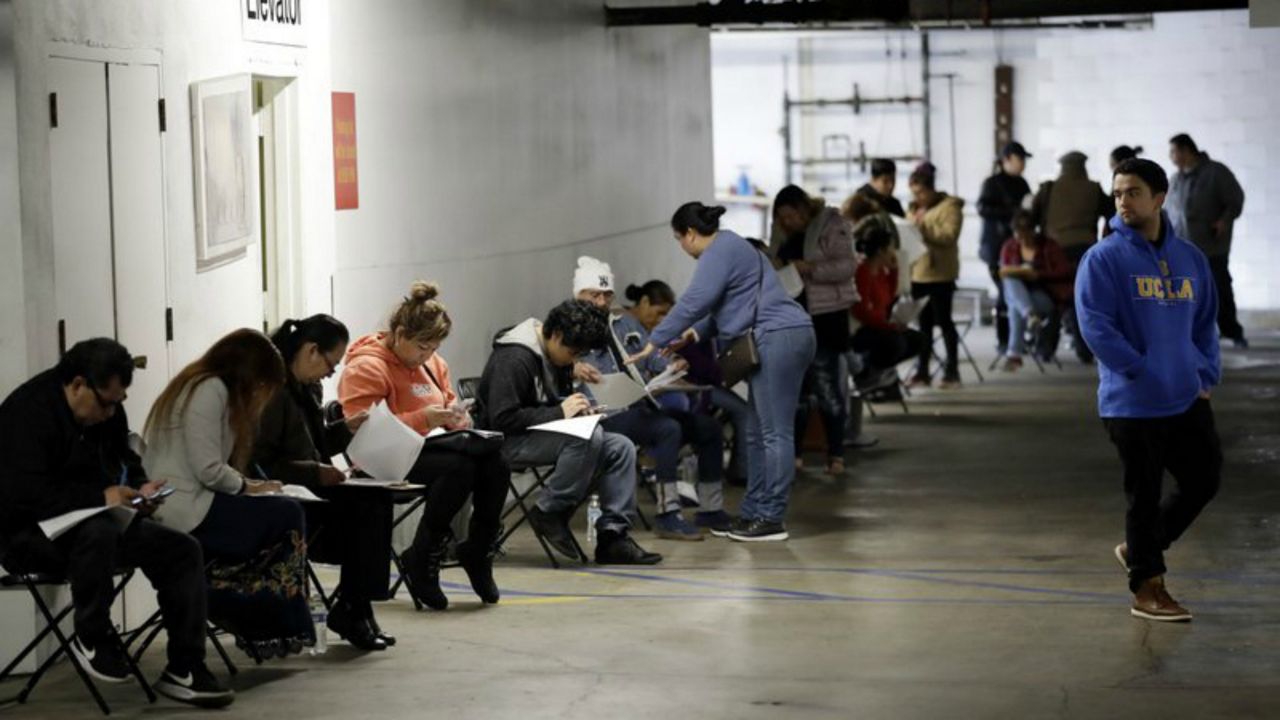CALIFORNIA — More than 6.6 million Americans applied for unemployment benefits last week — doubling a record high set just one week earlier — a sign that layoffs are accelerating in the midst of the coronavirus.
The advance figure for seasonally adjusted initial claims was 6,648,000. The advance number of actual initial claims under state programs, unadjusted, totaled 5,823,917, according to the U.S. Department of Labor.
Requests for jobless aid soared in all 50 states. In California, nearly 900,000 people sought benefits last week, around four times the previous week's figure, and equivalent to 5 percent of the state's workforce.
The number was 878,727 in the week that ended on March 28, compared to 186,333 in the week that ended on March 21.
MORE ON CORONAVIRUS:
- Jobs in SoCal: Businesses Hiring During Coronavirus Pandemic
- Ask Ariel: Your SoCal Coronavirus Questions Answered
The report Thursday showed that job cuts are mounting against the backdrop of economies in the United States and abroad that have almost certainly sunk into a severe recession as businesses close across the world.
Applications for unemployment benefits generally reflect the pace of layoffs. Combined with last week’s report that 3.3 million people sought unemployment aid two weeks ago, the U.S. economy has now suffered nearly 10 million layoffs in just the past several weeks — far exceeding the figure for any corresponding period on record.
Some of last week’s jobless claims are likely delayed filings from the previous week, when state offices that handle unemployment benefits were overwhelmed by a surge of online and telephone claims. Yet many of those offices are still struggling to process all the claims they have received. As a result, applications for benefits will likely remain extraordinarily high over the coming weeks.
The magnitude of the layoffs has led many economists to envision as many as 20 million lost jobs by the end of April. That would be more than double the 8.7 million jobs lost during the Great Recession. The unemployment rate could spike to as high as 15 percent this month, above the previous record of 10.8 percent set during a deep recession in 1982.
Employers are slashing their payrolls to try to stay afloat because their revenue has collapsed, especially at restaurants, hotels, gyms, movie theaters and other venues that depend on face-to-face interaction. Auto sales have sunk, and factories have closed.
Roughly 90 percent of the U.S. population is now under stay-at-home orders, which have been imposed by most U.S. states. This trend has intensified pressure on businesses, most of which face rent, loans and other bills that must be paid.
The Associated Press contributed to this report.
